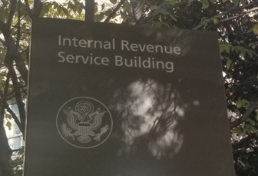
This last wave of tax filers are quite often the most productive people in our economy. Many are business owners, some with more than one business, or at least in some ways just have a lot going on, which means they usually add and not subtract from the tax base. That said, if your taxes are not done yet, then you’re in a rush (or should be) to get everything ready for filing, which usually means you’re not getting everything done accurately, and very often means you’re not getting any real tax mitigation advice either.
It’s a vicious cycle. You wait to file because you are so busy getting ahead and just plain getting things done, then comes the fear of the taxes that will be due. You forget deductions and have nobody giving you solid tax planning advice, which results in you paying higher taxes than necessary and writing a large check to the IRS. So, the following year you procrastinate again to delay the pain and the cycle repeats.
There are ways to break the cycle and it starts with an “anti-procrastination plan” for how to stop this behavior.
Step one: Gather together all of your current year tax information and a copy of last year’s return and bring it to your tax preparer’s office before October 1st! Have them start the return using the information you have in hand and give you a preliminary return. Taking that step can often help you realize that your fear of a huge tax bill was unfounded and that even with some expense data for your business missing, the result won’t be all that bad.
Step two: Open your calendar and book an appointment with yourself for the following week to finish up your accounting. If there isn’t room, make room. Treat it like an emergency. If the preliminary return delivered bad news then step two is even more important.
Step three: Get that additional information to the preparer and if the preliminary return is still bad news, ask them if any depreciation can be advanced or if any losses from prior years can be carried forward, or can any passive losses be taken. Ask them what else can be done to mitigate the taxes before filing. If you ask that question on October 2nd or 3rd you are likely to get a much more thoughtful answer then if you ask it on October 14th. Once you’ve thought of and done whatever you can, file the return, even if you don’t have enough money to cover the entire bill right now. You may incur late payment penalties and interest, but at least you will avoid failure to file penalties. If needed, make a payment arrangement with the IRS and once the dust settles, go back and take a closer look at everything. If there are major things that you missed that are in your favor, you can always file an amended return.
Step four: If your current tax preparer is not also a tax planner, find one as soon as possible! Ask them to work with you on helping yourself be more accountable to your tax outcomes by meeting with you outside the crunch of the tax filing season, so that you can put a plan together to pro-actively plan those tax outcomes in the future.
Lastly: Start NOW, not in three weeks!

